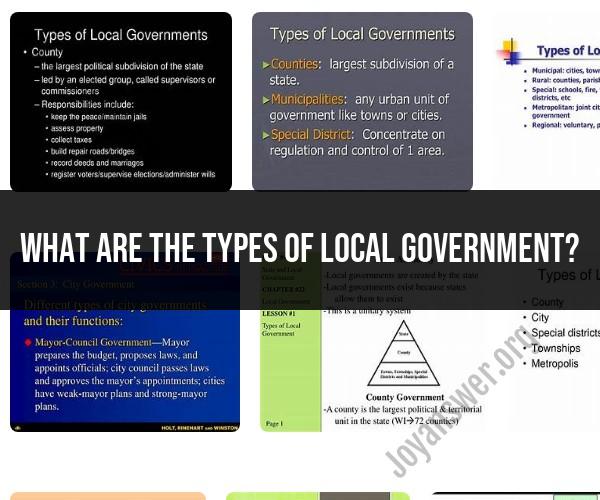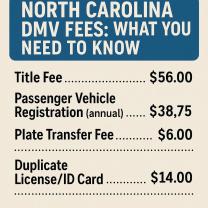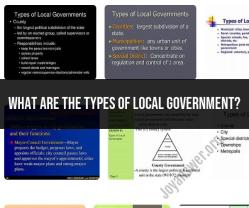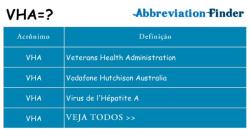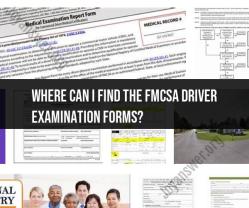What are the types of local government?
Local governments around the world come in various forms and structures, depending on the country's system of governance and administrative divisions. The types of local government can be broadly categorized into several common forms:
Municipal or City Government: Municipal governments are responsible for governing cities and towns. They typically have their own elected officials, such as mayors and city councils, and they provide essential services and amenities to urban areas. The specific structure and powers of municipal governments can vary widely between countries.
County Government: County governments are responsible for governing larger geographic areas known as counties or parishes, depending on the region. Counties often have elected officials, such as county commissioners or supervisors, who oversee services like law enforcement, public health, and public works for both urban and rural areas within the county.
Township or Parish Government: In some countries, especially in the United States, townships or parishes exist as a level of local government between counties and municipalities. They may provide services to unincorporated areas or rural regions.
Regional or Metropolitan Government: In densely populated urban areas, regional or metropolitan governments may be established to coordinate services and planning across multiple municipalities. These entities help address issues that extend beyond the boundaries of individual cities, such as transportation, housing, and environmental management.
Special Districts: Special districts are local government entities created to address specific needs, such as water supply, sewage, fire protection, or schools. They often have their own boards or authorities and generate revenue through taxes or fees for the services they provide.
Indigenous or Tribal Governments: In some countries, especially those with indigenous populations, indigenous or tribal governments have jurisdiction over specific territories and communities. They may have their own systems of governance, laws, and elected leaders.
Local Councils: Local councils are common in many countries, including the United Kingdom and Australia. They represent smaller geographic areas within regions and are responsible for local administration and services.
Communes and Cantons: In some countries like Switzerland, local government is organized into communes at the municipal level and cantons at the regional level. Communes are responsible for local governance, while cantons handle regional matters.
City-States: A few cities around the world, such as Singapore and Vatican City, operate as independent city-states with their own governments and unique political structures.
Other Unique Forms: Some regions may have unique or hybrid forms of local government based on historical, cultural, or administrative factors. For example, in Germany, there are municipalities, counties, and states (Länder), each with varying degrees of autonomy.
The specific titles, roles, and powers of local government officials and bodies can differ significantly from one country to another. These local governments often work in conjunction with higher levels of government, such as state or provincial governments, to provide services and govern their respective regions.
There are many different types of local government, each with its own unique structure and responsibilities. Here is a comprehensive overview of the most common types of local government in the United States:
- Counties: Counties are the largest unit of local government in the United States. They are responsible for providing a wide range of services, including public safety, infrastructure, and community services.
- Cities: Cities are incorporated municipalities with their own elected officials and government structure. They are responsible for providing a wide range of services to their residents, including public safety, infrastructure, community services, and economic development.
- Towns and villages: Towns and villages are smaller incorporated municipalities with their own elected officials and government structure. They typically provide a smaller range of services than cities, but they may still provide essential services such as public safety, infrastructure, and community services.
- Townships: Townships are a type of local government unit that is found in some states. They are typically responsible for providing limited services, such as road maintenance and land use planning.
- Special districts: Special districts are created to provide a specific service or set of services to a specific area. There are many different types of special districts, including school districts, fire districts, and water districts.
Each type of local government has its own unique structure and responsibilities. However, all local governments share some common goals, such as providing essential services to their residents and promoting economic development.
Here are some examples of the different ways that local governments are structured:
- Mayor-council system: In a mayor-council system, the mayor is the executive head of the government and the city council is the legislative body. The mayor is typically elected by the public, while the city council members are elected by district.
- Council-manager system: In a council-manager system, the city council is the legislative body and the city manager is the executive head of the government. The city council members are typically elected by district, while the city manager is hired by the city council.
- Commission system: In a commission system, the city commission is both the executive and legislative body. The city commissioners are typically elected by district.
The type of local government structure that a community chooses depends on a number of factors, such as the size of the community, the needs of the community, and the preferences of the community's residents.
Local government plays a vital role in our communities. It is through local government that we have the opportunity to have a say in the decisions that affect our daily lives.
